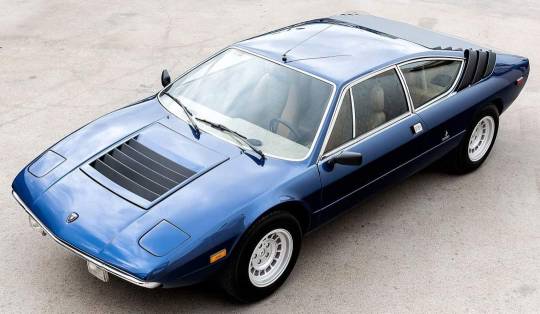#Lamborghini Urraco P300
Text




Lamborghini Urraco P300, 1974, by Bertone. The 3 litre version of the Marcello Gandini-designed 2+2 was only made in 190 units. The DOHC 2,996cc V8 made 250hp
#Lamborghini#Lamborghini Urraco P300#1974#mid-engine#V8#2+2#cutaway#Marchello Gandini#Bertone#1970s#wedge design
660 notes
·
View notes
Photo
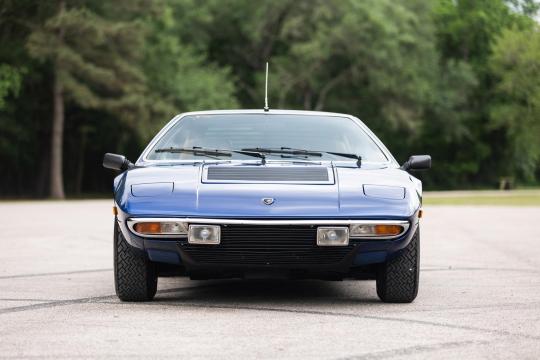



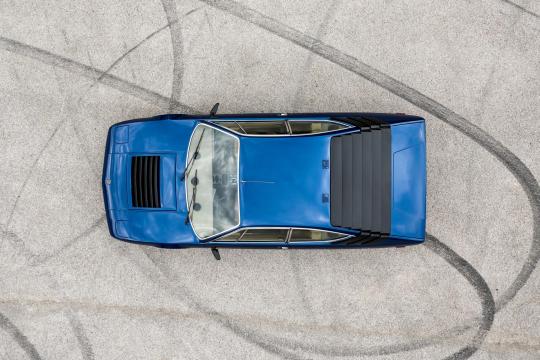
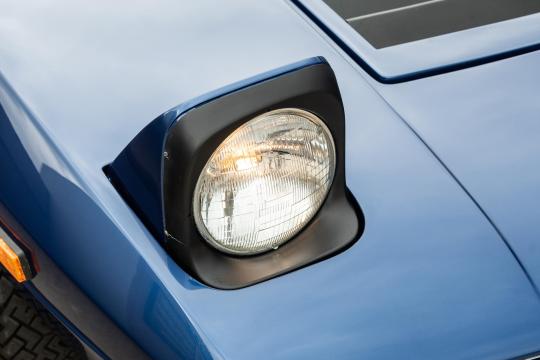
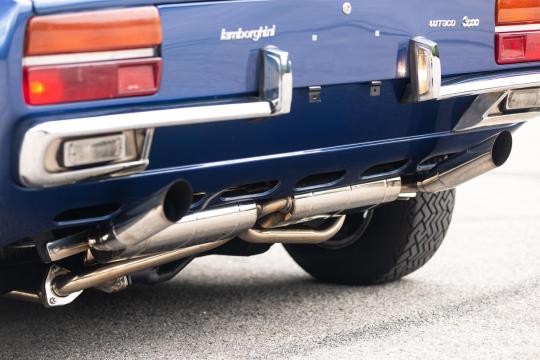
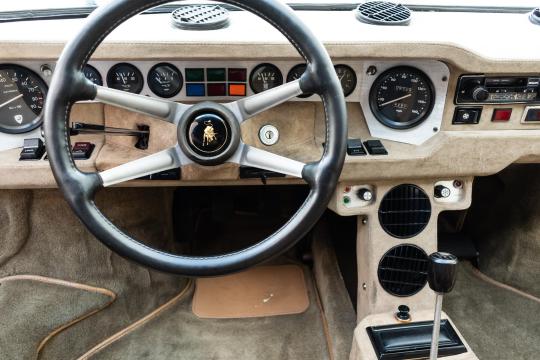
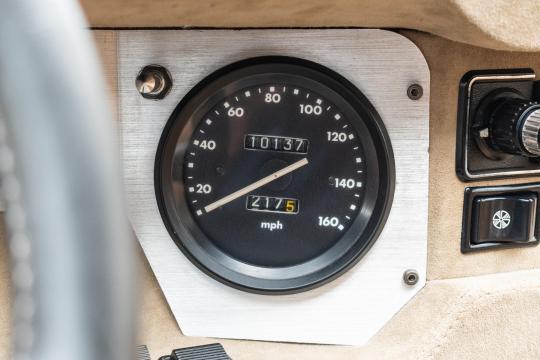
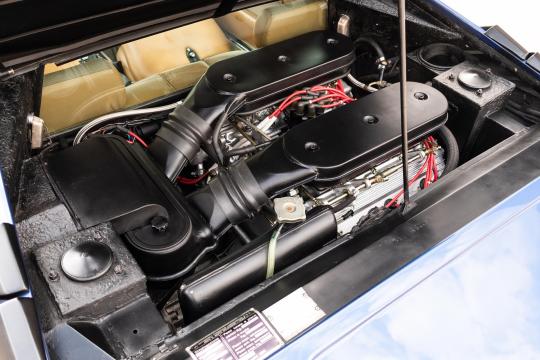
Lamborghini Urraco P300
Despite having been conceptualised as the model to dramatically increase sales and bring Lamborghini greater financial stability, the Urraco P250 proved a commercial flop. Production started in late 1972 following major equipment and floorspace investment. However, by late 1974, less than 500 had been delivered. The Urraco should have gone into production two years earlier than it eventually did. Lamborghini had originally conceived the model with a view to selling over 1000 examples every year.
The disappointing reality left Lamborghini deep in the red, but the Urraco was only partly responsible for a difficult few years.
Compounding the firm’s troubles had been delays for the Countach, a worldwide recession, problems at Lamborghini Trattori and unionised labour, all of which contrived to take their toll on the company founder. In 1972, Ferruccio Lamborghini had sold his tractor company along with 51% of his motor car business. He cashed out of the final 49% in 1974 when the world was in the midst of an energy crisis that slashed demand for gas guzzling machinery.
Throughout this tumultuous period, development work continued on the Urraco. It mainly focused on the Paolo Stanzani-designed V8 engine that had been created especially for the new model at considerable expense. In November 1974, an uprated Urraco P300 was launched at the Turin Motor Show. It immediately went into production alongside the Countach LP400, Espada Series 3 and Jarama S.
Most significantly, the Urraco P300 came with an enlarged three-litre engine. Equally importantly, the power unit now incorporated dual instead of single overhead camshafts.
To take capacity up to three-litres, Paolo Stanzani’s all-alloy 90° V8 was stroked from 53mm to 64.5mm. Bore went unchanged at 86mm for an overall displacement of 2997cc (an increase of 534cc). Compression was dropped from 10.5:1 to 10.0:1. Four new Weber 40 DCNF twin-choke downdraught carburettors were installed to replace the old 40 IDF 1s used previously.
The consequence of these improvements was a dramatic jump in output. Peak power was up 40bhp to 260bhp at an otherwise unchanged 7500rpm. The torque rating also rose considerably; 195lb-ft was now on tap at 3500rpm compared to 166lb-ft at 5750rpm for the P250.
As before, ignition was via two Marelli coils and a single Marelli distributor.
Lamborghini’s five-speed manual gearbox was beefed up to cope with the increased power and torque. Transmission was via a single dry-plate clutch and Lamborghini differential. New damper settings improved the ride, but otherwise little was changed to the existing platform The P300 was based on the same steel monocoque body shell as its predecessor. The engine was housed transversely like the Miura.
Suspension was independent all-round with MacPherson struts, coil springs and telescopic shocks. Anti-roll bars were fitted at either end The twin circuit brake system incorporated unchanged 278mm ventilated Girling discs. Campagnolo’s handsome five-bolt cast magnesium wheels were retained. They measured 7.5 x 14-inches and originally came shod with Michelin XWX tyres.
An 80-litre fuel tank was fitted in the engine bay.
Visually, the only change made to the P300 Urraco was a switch from a two-bank to six-bank radiator cooling vent on the front lid. The rest of Marcello Gandini’s soft wedge creation was unaltered.In a decade not exactly renowned for design longevity, the Urraco proved somewhat timeless. Compared to Bertone’s other mid-engined 2+2, the Ferrari Dino 308 GT4, the baby Lamborghini aged very well, even though it was ultimately outsold by the Maranello product by five to one.Build quality was considerably improved over earlier examples and nowhere was this more apparent than in the cockpit.Bertone had originally been responsible for furnishing the bodyshells, but by the time the P300 was on stream, this work had been taken in-house.
Lamborghini used better quality materials and ensured a higher standard of fit and finish.To this end, P300s were generally equipped with full leather interiors instead of the often garish two-tone leather and fabric combinations seen earlier.
The full width dash layout was still just as haphazard though. The rev counter and speedometer were located at either end of the instrument binnacle and angled in towards the driver. Supplementary gauges and various rocker switches were housed in between.
Lamborghini’s unusual deep dish steering wheel with its four arced horizontal spokes and leather rim was also retained. Like the P250 (which remained in production for a few months longer to use up an overstock of parts), the only update was the gradual shift to anodised black bumpers, wipers and window frames. A more conventional three-spoke steering wheel was also introduced towards the end of production.
#Lamborghini Urraco P300#Ferruccio Lamborghini#Countach LP400#Espada#Jarama S#Miura#Ferrari Dino 308 GT4#Bertone
176 notes
·
View notes
Text



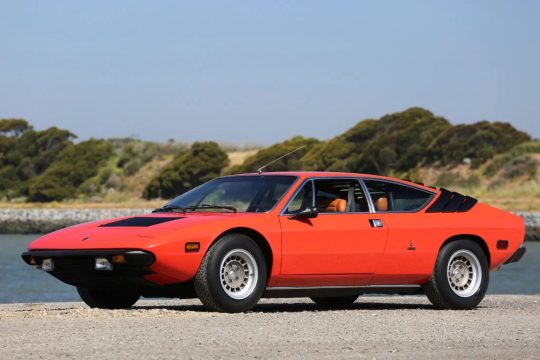
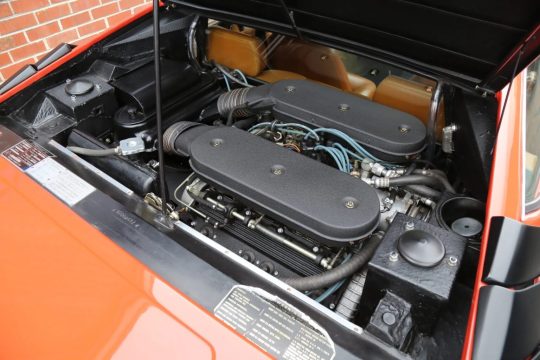
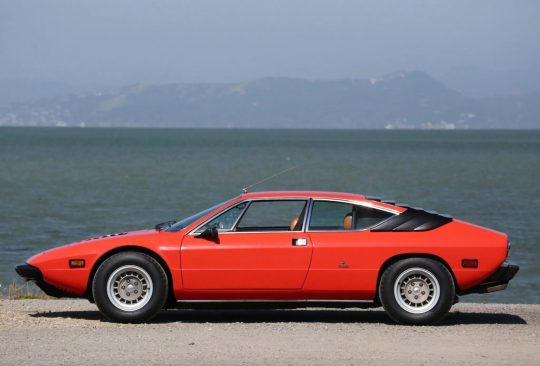

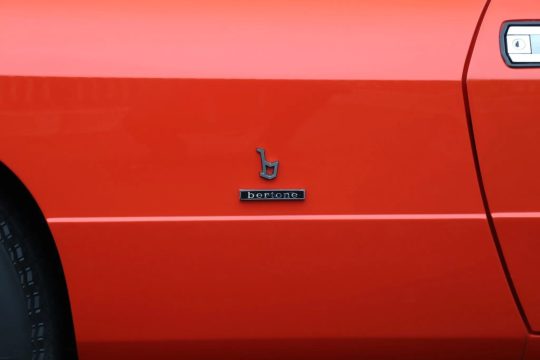
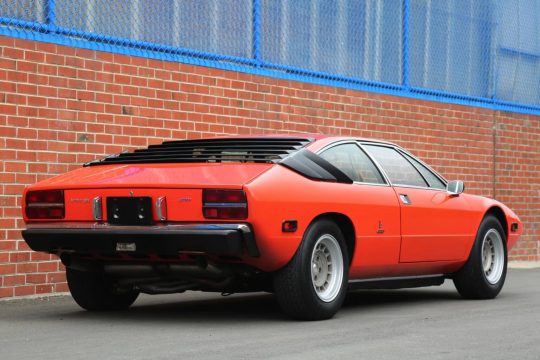
Lamborghini Urraco P300 1976. - source Amazing Classic Cars.
51 notes
·
View notes
Text

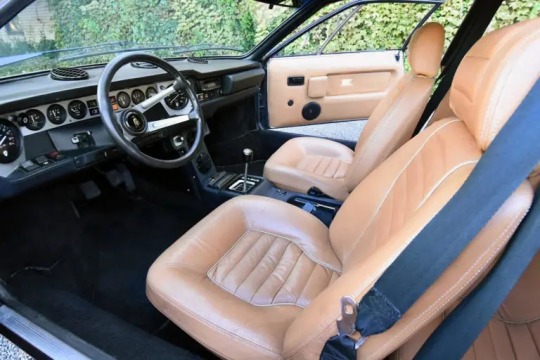

Need a budget 70’s super car? Is that even a question? Well here is the Lamborghini Urraco P300.
An event of epic magnitude struck the automotive industry in 1974 as the Oil Crisis was ravaging the automotive manufacturers around the world. Lamborghini, which had been no strangers to hardships in the early days of production, saw how this was effecting not only there competition but there own brand as well. A man by the name of Marcello Gandini who was souly responsible for the Muria’s existence, stepped to the plate and presented the idea that would become the Urraco. The Urraco packed a small 3.0 litre dual over head cam 16 valve V8, thst produced an impressive 247bhp and 195ft-lbs. With a 0-60 time of 5.6 seconds and a top speed of 165mph this was fastest four seater car in the world. I know what your thinking, “A four seater Lamborghini?” Yes indeed, Gandini’s broad range of design also covered the areas that the direct competitors did not. The Urraco was designed to directly compete with the Ferrari Dino and the Maserati Marack, that where only two seaters.
2 notes
·
View notes
Text
0 notes
Photo

Easily my favourite car from last weeks Coffee & Cars - The Lamborghini Urraco P300. One of 190 built, this car was originally sold new in 1976 in Canada. Designed by the one and only Marcelo Gandini from Bertone, and sculpted around a longitudinally mounted 247hp V8, it is not fast but it is beautiful. Surprisingly the only one I’ve ever seen! @weissachvan @lamborghinivan @lotuscarsvan ______________________________________ #weissachcarsandcoffee #coffeeandcars #carsandcoffee #carmeet #carsandcoffeevancouver #weissachperformance #lamborghinivancouver #lamborghini #lamborghiniurraco #urraco #urracop300 #p300 #rare #classiclamborghini #bertone #marcellogandini #blakejphoto (at Spanish Banks) https://www.instagram.com/p/BxjKjLQJeGx/?igshid=1666p8ijn5tgj
#weissachcarsandcoffee#coffeeandcars#carsandcoffee#carmeet#carsandcoffeevancouver#weissachperformance#lamborghinivancouver#lamborghini#lamborghiniurraco#urraco#urracop300#p300#rare#classiclamborghini#bertone#marcellogandini#blakejphoto
2 notes
·
View notes
Photo
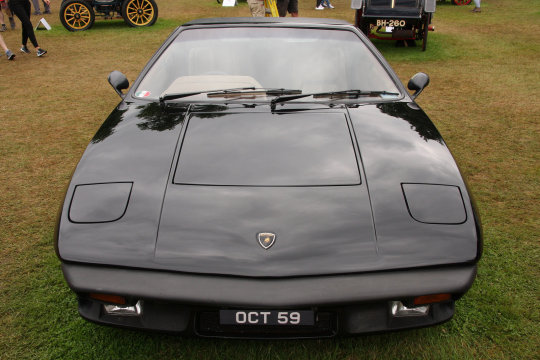
Starring: Lamborghini Urraco Silhouette P300
By DJC013
112 notes
·
View notes
Photo

1975-1979 Lamborghini Urraco P300 (it)
v8 3.0 250hp mr
supersports
1 note
·
View note
Text
All Lamborghini Cars From Birth to Now
As per legend, the introduction of Lamborghini has occurred after a battle between Enzo Ferrari and Ferruccio Lamborghini. The last griped to the Drake's not grandiose nature of the GT autos from Maranello. The discussion between the two happened in the mid 60s Ferrari and Lamborghini expelled, guiding him to "consider the tractors that I deal with self."
See pride, Ferruccio Lamborghini chose to give his life to a vehicle producer. Along these lines, in 1963, left the improvement of the first Lamborghini vehicle. The seat of Cento (FE) - where the Lamborghini tractors were created - working group formed by the creator Giampaolo Dallara Giotto Bizzarrini the specialist and architect Franco Scaglione.
350 GTV
The "trio" brought forth the Lamborghini 350 GTV model supercar displayed at the Turin Motor Show of that year and including the 3500 V12 motor which gave a top speed of 280 km/h. Additionally in '63, began crafted by the plant in Sant'Agata Bolognese.
350 GT
At the Geneva Motor Show in 1964, was exhibited the Lamborghini 350 GT creation variant of the 350 GTV. The vehicle was planned via Carrozzeria Touring and was moved by 3500 V12 motor with 270 pull driving the vehicle up to 250 km/h top speed. What's more, the Lamborghini supercar had the cockpit arranged in the bizarre example 2 +1. Appeared in the '65 Lamborghini 350 GTS Zagato and 3500, while at the Turin Show was exhibited the model P400 back motor. This was the new unit 3900 V12 350 hp and 430 hp in standard variant S.
The Miura
The model P400 prefigured the primary versus Ferrari model of Lamborghini. The Miura, formally displayed at the 1966 Geneva Motor Show. Other than being the image of Lamborghini, the Miura was the principal model to hold up under the name of a crowd of bulls. Actually, bull formally turned into the brand personality of Lamborghini, zodiacal sign as proprietor of Ferruccio. The vehicle was planned by Marcello Gandini, around then head of Centro Stile Bertone. The Miura was furnished with a 4000 V12 motor from 350 drive that can achieve a top speed of 270 km/h.
400 GT
In '66 was likewise displayed the Lamborghini 400 GT, a GT 2 +2 constantly moved from the 4000 V12 motor yet with decreased capacity to 320 hp. What's more, two models were exhibited as the 400 Monza and the Flying Star.
After two years, in view of the 400 GT was brought into the world his delegate, or the Lamborghini Islero, additionally determined by the 4000 V12 motor with 320 drive. In 1968 he was likewise introduced the Miura Roadster, stayed at the model stage.
In '69, in any case, the range was developed from 370 hp to the Miura S and the Espada. The last embraced the 4000 V12 320 hp motor and was the standard variant of the model Marzal, planned by Bertone and introduced two years sooner.
Jarama
In 1970, at the Geneva Motor Show Lamborghini Jarama was presented that supplanted the Islero, with whom he shared the 4000 V12 motor with 320 hp. In '71 appeared the Miura SV, the most recent advancement of 385 hp. Rather, at the Geneva Motor Show that year he was displayed the model LP500 motor mounted longitudinally back.
In 1972 the range was extended again with the Lamborghini Urraco, 4-seater car planned by Bertone, moved by the 2.5 V8 motor 220 hp. In '73 he left the scene the Lamborghini Miura, Countach supplanted by form sequential protoripo LP500.
In 1974, with the introduction of the model Bravo. Also, different renditions of the Lamborghini appeared Urraco: the P300 and P200 from 265 hp from 182 hp, it is proposed exclusively for the Italian market.
The emergency
The Lamborghini emergency was brought about by the advancement of an extravagance SUV and coalition with BMW to structure the M1. Soon after the introduction of the model in 1980 Athon, Lamborghini went to meet with disappointment. The organization resuscitated the following year because of the French gathering that displayed the Jalpa Mimran supercars like the new course.
Countach
At that point came the Lamborghini Countach Quattrovalvole in 1985 and the next year, the LM-002 SUV. Be that as it may, so as to endure, Lamborghini required a solid worldwide accomplice. In this manner, in 1987, the House of Sant'Agata Bolognese was taken over by Chrysler Corporation, headed by Lee Iacocca.
The initial step was the production of Chrysler Lamborghini Engineering Division, driven by Mauro Forghieri, which was planned by Formula 1 V12 motor which was embraced a year later and stables utilized by Larousse, Lotus and Minardi.
At a quarter century, in 1988 Lamborghini Countach 25 and introduced the model Genesis. Be that as it may, in '90 debut the main model planned by Chrysler, Lamborghini Diablo with retractable headlights. After three years the range was extended variants SE VT-wheel drive. Additionally in 1993, Ferruccio Lamborghini was missing, precisely thirty years subsequent to establishing Lamborghini auto.
Rather, in 1994 Chrysler surrendered Lamborghini to the consortium framed Asian MegaTech Indonesian and Malaysian MYCOM. During this period, it happened that new models however the range was extended with the Diablo VT Roadster in '95, and variants SV and SVR in 1996. Among different models were displayed Cala and Raptor.
Audi obtains control of Lamborghini
The most significant occasion in the historical backdrop of Lamborghini happened in '98, when the control go in the hands of Audi. The House of Ingolstadt extended by and by the scope of Lamborghini Diablo GTR and GT forms in '99, while in 2000 were submitted variants 6.0 and 6.0 SE.
Come the Murciélago and Gallardo
The consideration of Audi proved to be fruitful in 2002 with the Lamborghini Murciélago, structured by Belgian creator Luc Donkerwolke and outfitted with the 6.2 V12 motor from 580 hp. Furthermore, the next year exhibited the Lamborghini Gallardo, moved by the 5.0 V10 motor 500 hp Audi source.
1 note
·
View note
Photo



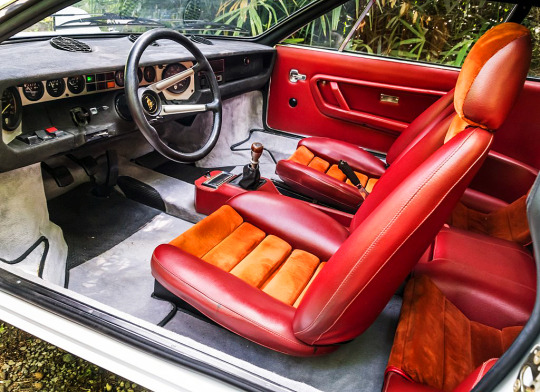


Lamborghini Urraco P250, 1970. Lamborghini is celebrating the 50th anniversary of the mid-engined 2+2 Urraco that was first presented at the Turin Motor Show in October 1970. Designed by Marcello Gandini, who was principal designer for Carrozzeria Bertone, engineering was by Paolo Stanzani, Lamborghini's Chief Technical Officer at the time. Introduced as P250 Urraco, where the "P" stood for the mid/rear (posteriore) position of the motor, and 250 for the engine capacity (2.5 litres). It was produced from 1970 to 1976 with 520 leaving the factory. After 1974 there was also a P200 (2 litre) for the Italian market (66 made) and the P300 (3 litre) that remained in production until 1979 (190 made).
#Lamborghini#Lamborghini Urraco#Lamborghini Urraco P250#1970#Bertone#Marcello Gandini#Carrozzeria Bertone#mid-rear engine#Paolo Stanzani#50th anniversary#Turin Motor Show#50th birthday#October 1970#1970s#wedge design
278 notes
·
View notes
Photo

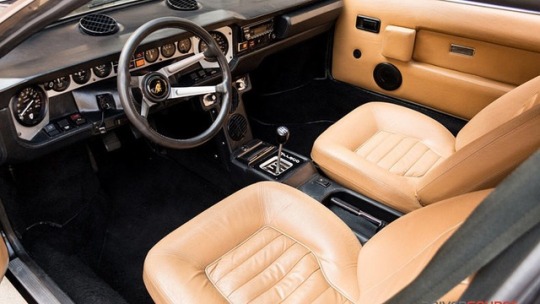

LAMBORGHINI URRACO P300 Bertone
170 notes
·
View notes
Text
Lamborghini manual for sale
LAMBORGHINI MANUAL FOR SALE >> DOWNLOAD LINK
vk.cc/c7jKeU
LAMBORGHINI MANUAL FOR SALE >> READ ONLINE
bit.do/fSmfG
lamborghini 6-speed manual
balloon white lamborghini for salelamborghini manual for sale near kyiv
lamborghini gallardo gated manual for sale
lamborghini manual for sale near kharkiv, kharkiv oblast
lamborghini gallardo se for sale
lamborghini gallardo 6 speed manual for sale
lamborghini gallardo stick shift for sale
Find used Lamborghini Gallardo Manual Cars for sale at Motors.co.uk. Choose from a massive selection of deals on second hand Lamborghini Gallardo ManualGet the best deals on Lamborghini Gallardo when you shop the largest Buy It Now 2014 Lamborghini Gallardo LP 560-2 50th Anniversario Manual RWD. Find Manual Lamborghini used cars for sale on Auto Trader, today. With the largest range of second hand Lamborghini cars across the UK, find the right car Find Lamborghini Gallardo Manual offers for sale on AutoScout24 - the largest pan-European online car market. 6 Lamborghini Manual cars for sale in Australia · 1977 Lamborghini Urraco P300 Manual · 1996 Lamborghini Diablo SV Manual · 2004 Lamborghini Gallardo Manual AWD. No accidents, 3 Owners, Personal use. 2013 Lamborghini Gallardo. LP560-4 Spyder. Excellent Price. $139,995. 31,687 miles. Addison, TX.
https://hugakesotivi.tumblr.com/post/667331460551819264/canon-camera-eos-500d-manual, https://povifaduh.tumblr.com/post/667253650405703680/proctor-silex-clothes-steamer-instructions, https://kaqoqamecodo.tumblr.com/post/667340384762003456/gog-enmey-manual, https://wuxujexifo.tumblr.com/post/667297698917023744/olympus-omd-em1-user-guide, https://fapagidunu.tumblr.com/post/667285971512000512/extended-essay-guide-2019.
0 notes
Photo

Bertone Wedge. Lucious Louvers. Mid-Engine V8. 1975 Lamborghini Urraco P300 Chassis No. 20094 Engine No. 20094 (Matching Numbers) Bertone Body No. 544 1 of Only 205 Examples Constructed from 1975-1979 Dressed in Attractive Blue Notte over Senape Upholstery Mechanical Restoration by Marque Experts Evans Automotive with Nearly $125,000 invested and invoiced. Recognized in the Lamborghini Urraco Register Original Numbers Matching Engine Offered with Original Driver's Handbook & Dealer Brochure Includes Ownership History and Restoration Documentation The Most Desirable and Highest Powered Urraco Model Selling Now @driversource .com _________________________________________________ #urraco #bertone #lambo #lamborghini #classiccar #supercar #classiclamborghini #getoutanddrive #driveclassic #drivetastefully #driversource (at Houston, Texas) https://www.instagram.com/p/COd-Gyrllez/?igshid=c35v4xsowxoz
#urraco#bertone#lambo#lamborghini#classiccar#supercar#classiclamborghini#getoutanddrive#driveclassic#drivetastefully#driversource
0 notes
